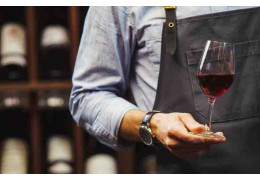Unbeatable !
MULLED WINE, IDEAL FOR THE FESTIVE SEASON

Mulled Wine: Perfect for the Holiday Season
The Tradition of Mulled Wine
As every year, the cold gradually settles over our country. To counter winter blues, many eagerly await the magic of the holidays and the accompanying traditions. Mulled wine is one of those eagerly awaited icons each year as Christmas markets approach. For many, it is more than just a drink: its warm aromas of fruit and spices instantly transport us to the enchantment of the holiday season, evoking warm and comforting memories in the heart of winter. This beverage, however, did not wait for the emergence of Christmas markets to make a name for itself. Spiced and heated wine has been appreciated for several hundred years. Over time, its preparation has evolved, and various mulled wine recipes have emerged across different cultures. Where does mulled wine come from, and how did it reach us? What are its main recipes, and how do you choose the right wine to use?
History and Origin of Mulled Wine
The earliest traces of mulled wine date back to the Roman Empire in the 20th century AD. At that time, mulled wine was reputed to aid in digestion. It was appreciated because it masked the taste of oxidized wine, allowing people to enjoy it for longer. The Roman version of mulled wine involved boiling honey in wine, adding spices and dates soaked initially in the wine, along with roasted date pits.
Later, we find it in the Middle Ages in southern France. Chrétien de Troyes mentions "pimen," a spiced wine that was a source of pride for the Catalan and Occitan regions. In the 13th century, it took the name "Hippocras" and gained fame in the city of Montpellier. At that time, spices were rare and transported from the Middle East to France through the port of Lattes, near Montpellier.
Mulled and spiced wine has since been present in Europe, particularly in Nordic and Germanic countries, with its consumption becoming closely associated with the Christmas period from the 1890s onward. It's no wonder for anyone who has experienced the combined warmth and spices that have no equal in warming the soul.
How to Prepare It Perfectly
The beauty of mulled wine is that spices and sugar can enhance the flavor of the wine. The Romans appreciated it because they lacked effective means of preserving wine. However, a good mulled wine requires selecting a suitable wine, not just a poor one.
Heating a wine will amplify its flavors. It's important to choose a wine with pleasant fruity notes. Preferably young (one to three years old) and with minimal influence from aging (avoid long aging in oak barrels). A rich and round red wine is ideal, though the recipe also works with white wine. For red, we recommend a mid-range wine from the Rhône Valley, a Pinot Noir from Alsace, a Grenache from Languedoc, or a red from the Loire. For white, the same rule applies: choose aromatic varieties from Alsace, Sauvignon Blanc, or Chenin Blanc from the Loire.
Next, simply add to a saucepan (for one liter of wine): citrus fruits (traditionally one orange and one lemon), sugar (100 grams of brown sugar or honey), and spices. Traditional spices include cinnamon, anise (also known as star anise), cloves, and nutmeg. Bring to a simmer for five minutes and then let it simmer gently.
What to Pair It With
For food pairings, mulled wine is perfect for seasonal associations. Pair this Christmas-evoking drink with Christmas cookies, chocolate cakes, spiced biscuits (such as gingerbread), or roasted chestnuts from the nearby Christmas market stand. These pairings not only have culinary appeal but also enhance the emotion of Christmas and the comfort of spices, roasted chestnuts, biscuits, and all the elements of folklore that make this time of year special.



